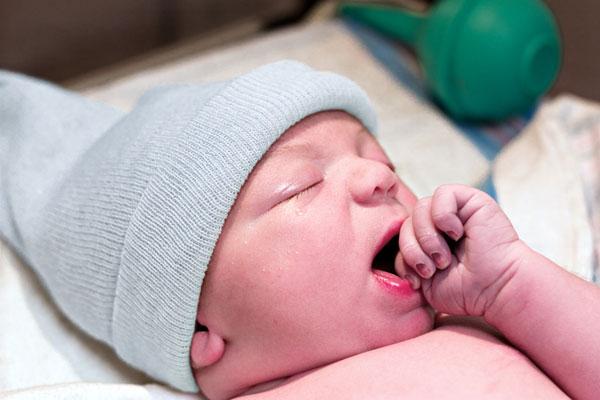Docs Divided Over Best Oxygen Levels for Preemies

Extremely premature babies need oxygen to help them breathe, but exactly how much oxygen is best for these infants is a controversial topic.
Two new studies aim to answer the question, but doctors are still divided on the issue.
One study, published today (May 5) in the New England Journal of Medicine, suggests that keeping blood oxygen levels up in the higher end of the range they have traditionally been kept in — between 91 to 95 percent — may be wise. In this study, premature infants whose oxygen levels were kept in this higher range were less likely to die while they were in the hospital compared with babies whose oxygen levels were kept between 85 and 89 percent. But babies in the lower oxygen group were less likely to develop a condition that can cause blindness.
By contrast, a second study, published in the Journal of the American Medical Association, found there was no difference between the two oxygen groups in terms of the percentage of babies who lived to be 18 months old, as well as the percentage of babies who were disabled at this age.
The findings of the JAMA study contrast with those of earlier work, but there was some suggestion that babies' oxygen levels in this study were more tightly controlled than those of previous studies. Although doctors and nurses ideally try to keep babies' oxygen levels between 85 to 95 percent, they can fluctuate below or above this range.
"All of these studies say we just need to be really careful how we set our limits, and how we adhere to them," said Dr. Edward Shepherd, a neonatologist at Nationwide Children's Hospital in Columbus, Ohio, who was not involved in the studies. Because of the new studies, hospital staffs are likely to be more aggressive in keeping levels within the 85 to 95 percent range, Shepherd said.
But others said the new studies mean that doctors will be likely to favor higher oxygen levels for premature infants to reduce their risk of death.
Sign up for the Live Science daily newsletter now
Get the world’s most fascinating discoveries delivered straight to your inbox.
"The conclusion will be that keeping babies with low [oxygen] saturations is not a good idea based on the evidence that’s available now," said Dr. Eduardo Bancalari, of the University of Miami Miller School of Medicine, who co-wrote an editorial accompanying the JAMA study. Some doctors are recommending that oxygen levels be kept between 90 and 95 percent, Bancalari said. [11 Facts Every Parent Should Know About Their Baby's Brain]
In the 1940s, doctors advocated liberal use of oxygen in premature babies to help them survive. But studies done in the 1950s and 1960s showed that high oxygen levels increased the risk of blindness.
Recently, doctors have kept oxygen levels between 85 and 95 percent, but whether there is a tighter range that provides the greatest benefits to babies while reducing their risk of blindness is not known.
Both of the new studies involved very premature babies (born before 28 weeks of pregnancy) who were randomly assigned to either a low- or high-oxygen group. Because of their prematurity, these babies are already at high risk of complications, including death. The New England Journal study involved babies in Australia, New Zealand and the United Kingdom, while the JAMA study involved babies in Canada, the United States, Argentina, Finland, Germany and Israel.
Both studies encountered a software problem halfway through — the calibration on the devices used to measure oxygen saturation levels was off — which had to be fixed.
In the New England Journal study, babies in the low oxygen group had a higher rate of death (23 percent died before leaving the hospital) compared with those in the higher oxygen group (16 percent). Among all babies in the study, those in the lower oxygen group were less likely to develop the condition that causes blindness (10 percent treated) compared to those in the higher oxygen group (13 percent treated.)
The JAMA study did not confirm these results. This study provides "a message of reassurance that [low oxygen levels] can be safe," as long as the levels are not allowed to slip below the miniumum, said study researcher Dr. Barbara Schmidt, of the Children’s Hospital of Philadelphia.
Looking at both studies, "the story continues to be untold as to what optimal [oxygen] target is," said Dr. David Mendez, neonatologist at Miami Children's Hospital, who was not involved in the studies.
Researchers are awaiting the results from a larger study, involving 5,000 babies, which may provide a better answer, Mendez said. Technology that could automatically adjust oxygen levels would be an important advancement, he said.
Both studies will be presented today at the Pediatric Academic Societies annual meeting in Washington, D.C.
Pass it on: Two new studies aim to find the optimal oxygen levels for preemies, but doctors are still divided on the issue.
This story was provided by MyHealthNewsDaily, a sister site to LiveScience. Follow Rachael Rettner @RachaelRettner. Follow MyHealthNewsDaily @MyHealth_MHND, Facebook & Google+. Originally published on MyHealthNewsDaily.

Rachael is a Live Science contributor, and was a former channel editor and senior writer for Live Science between 2010 and 2022. She has a master's degree in journalism from New York University's Science, Health and Environmental Reporting Program. She also holds a B.S. in molecular biology and an M.S. in biology from the University of California, San Diego. Her work has appeared in Scienceline, The Washington Post and Scientific American.
Man gets sperm-making stem cell transplant in first-of-its-kind procedure
'Love hormone' oxytocin can pause pregnancy, animal study finds









